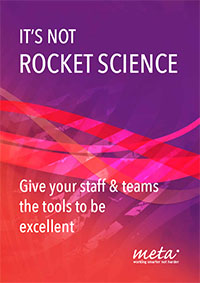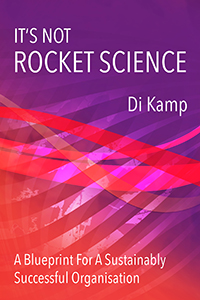We are now in year 5 of a global experiment in hybrid working. We adopted it along with the technology that goes with it out of necessity, because of the global pandemic.
At the time we needed to ensure that our people were safe, that businesses did not completely grind to a halt, and we could, in time, begin to rebuild our businesses during the pandemic and post-pandemic. So, we sent people to work from home and then moved to a hybrid-model of working.
At first there were real benefits to working from home: we could put a wash on and get it out, we could go out in the garden and have a cuppa and bring the laptop with us. We could get comfy, be in our scruffs as we worked, take our prescribed hour a day exercise while we dialled in to a meeting. Organisations were hugely supportive of our well-being and we seemed (despite the dystopian reality of life in the pandemic) to be living the utopian work dream.
However, that dream, for many, quickly began to turn into a nightmare. People want to give of their best, most have a strong work ethic which means that they started to work through their breaks, and worked longer hours, working through what would have been their commute home. No more the lazy cuppa in the garden while sitting on Teams – the tide of work was coming in and fully invading peoples’ homes and lives.
Yes, I realise that for a few demographics, for example new parents and IT programmers/coders and many in Gen Z, hybrid working has been a boon that continues to suit them, however, for most it is not. We are working much harder and longer hours than ever now we are hybrid-working.
The data bears this out. From 2000-2019 the average work week in the UK did increase by 1.5hours from 40.5hrs to 42hrs. However, during the pandemic, a major study done in America (on 3 million workers, so no small research) found that, on average, people were working 48.5minutes more by October 2020 than they had been before the transition to working from home. That’s an extra 4 hours a week (on top of the 42hrs) – so that’s 1.5 hours in 19 years and 4 hours more in less than 10months. The empirical evidence Meta has gathered since, from our extensive leaders’ network, says that very little has changed since then.
Technology is a great enabler and there is no doubt that, without MS Teams, Slack, Zoom, WhatsApp and other virtual working platforms, we would not have been able to make the transition to the hybrid-model so quickly. At first technology was a life-saver (quite literally) and a business saver. However, it’s not the answer to everything, despite what the big tech bosses might tell you.
Now let’s be clear here, technology is, overall, a good thing. It has helped us to come together and work together – despite our location. This has opened up job prospects for many; no longer do you have to apply for work to organisations in a commutable distance for example, and as an organisation you can get the best candidate almost wherever they are.
It also can be very useful to do the basics of team work-days: the check-in morning meeting, the affirming who does what meeting, the are we all on the same page meeting, the email confirmation, the emoji on Slack that tells you that one of your colleagues loved what you just said, the ability to connect with your people, your team, no matter where they are in the world – but it shouldn’t be used for everything.
Technology should make our work-lives easier. It should make us more productive, more efficient, and enable us to do things more quickly. And in some arenas, it does. However, I’m old enough to remember a life before emails, and before endless back-to-back virtual meetings – in many ways, technology has slowed us down and takes up more and more of our time. If you don’t believe me, today measure how many emails you send and receive and how long it takes out of your day to reply and send them. Then add to that the time you spend in virtual meetings today (and add your meeting prep time to that too) – how much time do you have left to actually DO your to-do list? Your ACTUAL day job? Answer most likely is 2-3 hours if you’re lucky?
Technology just makes us go faster and expect things faster. There was a time (and by the way this is still a myth that is being espoused by AI champions) when we were told that the implementation of technology would lead to a 4-day working week, because technology would do all the heavy lifting and we’d be able to put our feet up! Well, I think we can safely say that dream never became a reality and there is a case to be made that actually we’re doing more, not less, as a result of technological advances and that there are more demands on us now due to the technologies and software we use.
Technology has also strongly affected the team dynamic, as has hybrid-working itself.
Over the last 25 years Meta has been in business, we have seen the streamlining of businesses and the flattening of structures as a general trend. The flatter cross-functional structures require increased team working and collaboration in order to be efficient. However, the opposite has seemed to happen.
It is harder to work collaboratively when you are not together in the same office. Yes, you can get on a screen and try to work things through, but it is just NOT the same or as effective as being in person. We are human beings and, as such, we feed off each other’s energy and enthusiasm when we are together in a room. When we try to do the same thing over technology, most if not all of that energy and enthusiasm is absorbed and not passed on. Technology is an energy drain – it may pass on data, but it doesn’t pass on energy – in fact it actively drains us – and now we are on our technology more than ever. Is it any wonder we feel more and more exhausted at the end of our working day?
Some of you will be thinking, ”Yes Jo, but if we want to collaborate, we can just meet up in person at the office” – and I will say to you. 1. Good luck with finding a time you can all meet up; 2. Good luck with booking a room in your old office (because most of the office space has been sold off or let go of); and 3. It’s hard to get creative and be collaborative on a schedule – i.e., at 3pm next Wednesday, because that was the only time we could book a meeting room!
Another major impact to the team dynamic is the loss of the informal off-line conversation, the informal support that comes from being in the same office as your fellow team members. If you’ve just had a challenging call with a customer, it’s useful to be able to chat it through with a colleague. Yes, you could do that via a Teams chat but it’s not the same, you don’t get the same feeling of care and support just through a text. And yes, you could set up a Teams meeting to discuss it, but that takes time and effort and most of the time it means we don’t. We don’t want to bother our colleagues, we know how busy they are, and so we end up, if we are not careful, isolating ourselves and feeling isolated.
This feeling of isolation combined with the increased workloads and work pressures that people now face, can lead to stress, illness, and mental health issues. One could argue that the well-being of our staff is being directly affected by our new ways of working.
The likelihood is that, over the last 5 years, you’ve had some turnover of staff in your team. You’ll have new members, and it’s really hard to build relationships virtually. It’s not easy to really get to know someone (or your whole new team) over MS Teams. You don’t get the same communication level and feedback over technology, and it leads to an increased risk that new staff members do not feel ‘part of the team’ and, in the worst case, can lead to increased staff turnover.
There are so many communications channels now within organisations that it can feel like communication overload. Yes, you can communicate via MS Teams chat, WhatsApp, Slack, Zoom, email – but has it really improved your team’s communication, or has it just created more confusion as to which comms channel to use for what?
As leaders, building strong relationships is one of the most important parts of leadership. Yet it’s hard to do when you’re mostly doing your leadership and partnership meetings online. It’s also incredibly hard to lead and manage your teams virtually.
As a leader, in the past you’d only need to walk into the office to get a ‘feel’ for how your team was, and how particular members of your team were that day. You learn to get a sense for where the team spirit is and who needs a bit of support or assistance that day. It becomes a bit of a sixth sense that great leaders have, because of their close proximity to their staff. However, it’s much more challenging and time consuming to do all that virtually. Yes, you can check-in each day, but it’s not easy and you won’t always pick up on the non-verbal signals of stress or unease coming from your team members.
When you were together in the office, you were visibly a team. When you were assigned a project or task you were assigned it as a team. Yes, one of you may have led on it, but it was a part of the team’s delivery plan – a joint-responsibility. However, now this responsibility, and the pressure for delivery, tends to fall more on the individual rather than the team. There is less collaboration now, as it’s just harder to collaborate effectively when working virtually. This leads to less ‘teamwork’, and more of individual team members doing their best to get what needs to get done.
Flatter structures were supposed to end silo-working in organisations, but without great cross-functional team working and collaboration, the pressure and workload is now falling on the individual rather than team. It ends up encouraging ‘solo-silo-working’ rather than team working – ironically there is more silo-working now than before.
Now, I’m not intending to be all doom and gloom, but I do want to highlight something that is raised time and again, in the leadership and team development work we have been doing in organisations these last few years. This is not something that is sector specific, it is an issue in all sectors and affects teams across organisations – big and small.
It is part of our purpose to bring these “meta-issues” (quite literally issues ‘at the next level’, the ‘BIG ISSUES’) up into the spotlight, so that we start to have the conversations that need to be had. It’s part of our job to highlight trends we are seeing, to stimulate thought, provoke response and action and help support you in reducing the impact of them.
As leaders and as team members you can look at your own teams. Have you noticed a difference in your team dynamic over the years of hybrid working?
There is a real thing called ‘TEAM SPIRIT’ It’s not a woo-woo thing – it’s REAL. You KNOW when you have it, when it’s GOOD, and you can sense when it’s missing or not where it should be. Spirit is energy, and so where is the energy of your team right now? Does it need a pick me up? Is it feeling a little flat?
There are plenty of things you can do as leaders and as team members to re-invigorate team spirit and bring that sense of collaborative energy back to your team.
- Make sure you’re checking in on your fellow team members on a regular basis.
- If someone’s gone a little quiet recently, make sure you give them a call or arrange a virtual cuppa.
- Team ‘virtual lunches’ can be a great way to re-establish the team, making sure to have those informal conversations that help build team relationships.
- Make sure that as a team you have your own ‘rant buddy’, someone whom you can call on for support and just to let off steam when you’ve had a challenging day.
- Regular team events IN PERSON: make sure that at least once a month you have an IN PERSON meet up, and combine it with a more social element too.
- Why not have a team technology-free day once a month – where you are in the office together and only talk and meet with each other face to face.
- As leaders, make sure you diary in your 1-1s with each of your team. 1-1s are not just about checking work progress anymore, they are a vital way to be monitoring the well-being of your staff.
- As leaders, when was the last time you had a team away-day? One of the quickest, easiest, and best ways to re-invigorate team spirit is to get your team together away from the office for a team away-day. Use it as an opportunity to share your vision, set up a plan for the coming months or year ahead. You could use the day to develop and up-skill your staff on a particular topic or skill. Whatever you do, make sure that a part of the day is FUN and has a social element.
- As leaders, it’s time to re-visit your organisational hybrid-working experiment. What works? What frankly doesn’t? What do you need to tweak in order to make your hybrid-working experiment fit for purpose and give better outcomes for your staff and for your organisation?
- As leaders, have you equipped your staff with the tools to deal with the increased stresses they now face? Do you need to look more closely at smarter working practices, to ensure you’re getting the best performance from your staff and your hybrid-working model?
These are just 10 examples of how you can ensure that hybrid-working isn’t killing your team – at Meta we have so many more ideas that we’d love to share with you.
The reality is HYBRID-WORKING is here to stay – so it’s vital that we start having the conversations about how to make it work best for you, your team, and your organisation. It’s time to revisit the experiment in HYBRID-WORKING, to do your own 5-year review to see what you need to do to maximise-performance and get positive outcomes for all.
Remember, you don’t have to do that alone – Meta is here to offer advice, support, and to help! So please call on our expertise in this arena. We believe there is a golden opportunity to change the way we work to a more sustainable way of working – working in a way to get the best from the technology and hybrid-models we are using; and giving leaders and their people the practical tools so that they can work smarter not harder, and not just survive in 2025 but THRIVE in 2025.
I hope that this article has stimulated your thoughts, and I hope that you’ll get in touch and let me know how your hybrid-experiment is going and what you’re going to do to make 2025 a year where you, your people, and your organisation THRIVE.
Have a wonderful start to your year,
In peace,
Jo, CEO of Meta





Comments are closed.